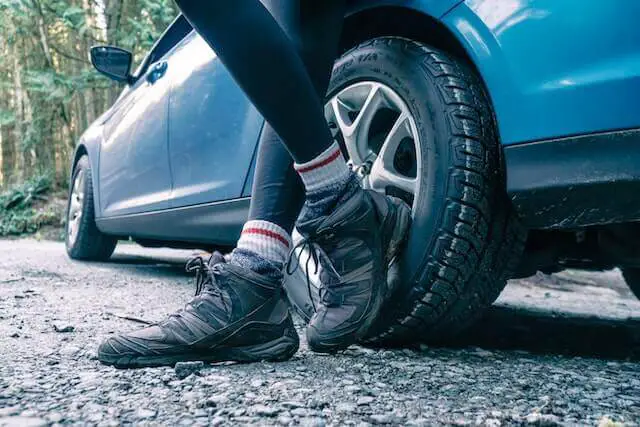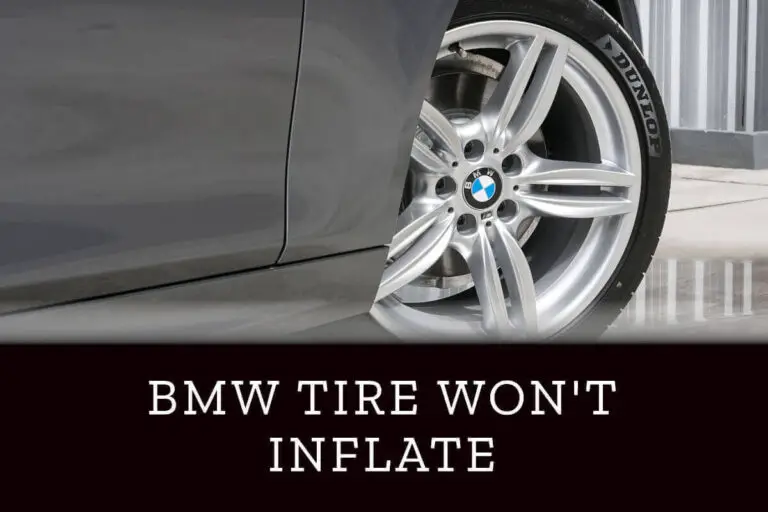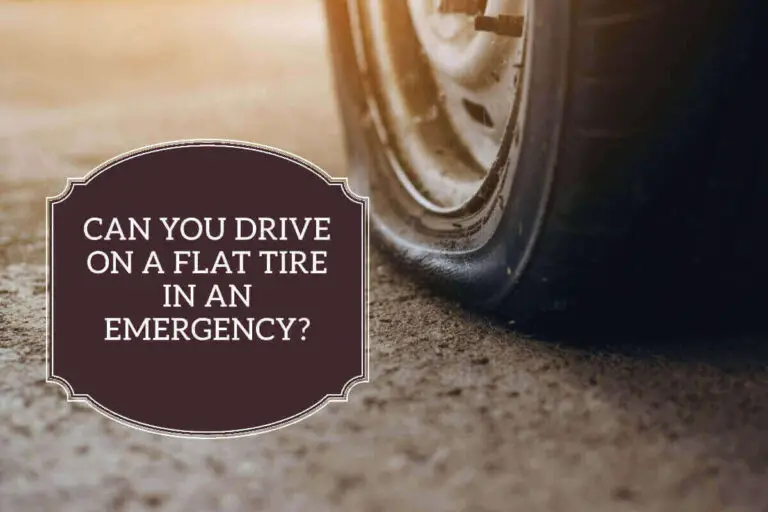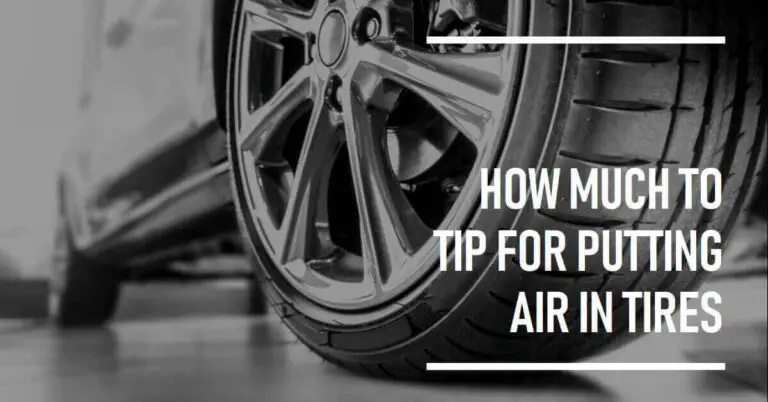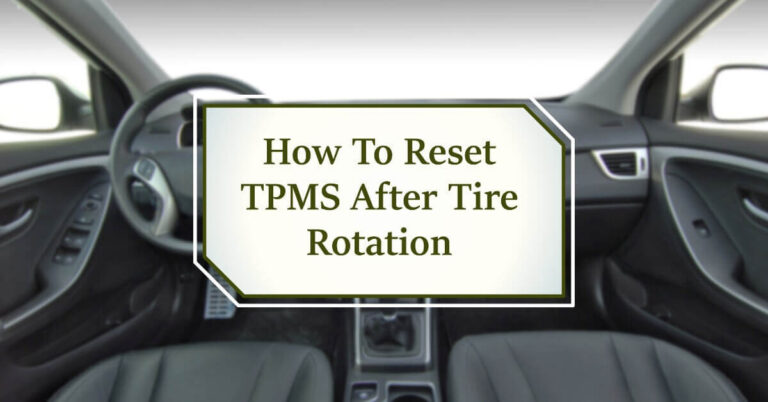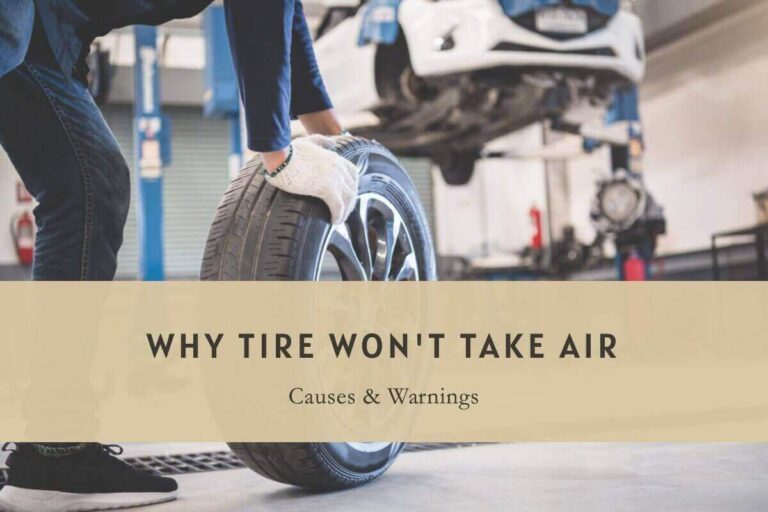Slow leaky tires are a leading cause of traffic accidents. Every year, countless motorists find themselves in danger because they neglect to check their tire pressure properly. Low tire pressure reduces handling and control of the vehicle and significantly increases fuel consumption.
Let’s get to the details of what problems occur with tires if pressure is low and how to get rid of them.
Effects Of Driving With Low Tire Pressure
Most people have experienced the effects of driving with low tire pressure at some point. It can be a flat tire or a slow leak, gradually decreasing the pressure. Either way, knowing the effects of driving with low tire pressure is important.
It can cause decreased fuel efficiency, shortened tire life, and increased risk of accidents. Knowing the effects of driving with low tire pressure can help you avoid these problems.
Here are some problems in detail.
1. Loss Of Control
Road safety depends heavily on tire pressure. A tire with low pressure is more likely to lose contact with the road, leading to a loss of control. It can be extremely dangerous, especially at high speeds.
Inflate your tires to the recommended level regularly and check their pressure. It will help to ensure that you have a safe and smooth ride. If you experience a loss of control, it is important to remain calm and avoid panic braking. Instead, gently apply the brakes and steer in the direction you want to go.
2. Reduced Fuel Efficiency
The researchers tested this by driving two vehicles on a closed course at different speeds and with different amounts of tire pressure. They found that the vehicle with low tire pressure required more energy to maintain the same speed as the vehicle with properly inflated tires. Its increased energy requirements led to reduced fuel efficiency.
So, if you want to save gas money, ensure your tires are properly inflated. It could mean the difference between wasting money on gas and saving money on gas.
3. Increased Wear And Tear
According to a recent study, driving with low tire pressure can increase wear and tear on tires, causing them to wear out faster. The study found that low pressure is more likely to suffer from premature tread wear, which can lead to decreased performance and increased fuel consumption.
In order to maintain the longevity of your tires, you should maintain the right tire pressure. If you frequently drive with low tire pressure, your tires may be at risk of premature wear and tear. You can extend the life of your tires by regularly checking your tire pressure and inflating them properly.
4. Safety Hazard
Driving with low tire pressure is a safety hazard that can lead to accidents. Tire pressure affects a vehicle’s handling, braking, and fuel economy. Underinflated tires create additional friction on the road, which can cause the tires to overheat and fail. It can lead to a blowout, which can cause an accident. When driving with low tire pressure, it is important to check the pressure frequently and fill the tires as needed.
5. Frequent Flat Tires
When you ignore the low tire pressure and continue your journey with the low pressure in the tire, the pressure in the tire loses gradually and in very little time, depending on the pressure of different tires and vehicles, and it causes flat tires and most common danger of flat tires is blowouts.
The recommended pressure of most tires is 20 psi which is considered a flat tire, that can result in blowouts in no time and damage the tire, rim, and other vehicle components like suspension and steering along danger to the lives of the tire including the driver.
Can Driving With Low Tire Pressure Be Dangerous?
Yes, absolutely it is very dangerous to drive with low tire pressure.
Although low tire pressure affects badly your tire, rim, and vehicle components, the most common reason for which is dangerous is tire blowouts.
A blowout occurs due to more heat is produced due to the low pressure in the tire and the tire being more in contact with the road, The sidewall of the tire flexes more than usual and the sidewall builds up more heat, tire doesn’t cool off because you are not stopping your vehicle, it causes more heat due to driving and causes a blowout.
Moreover, adding to the blowouts, your tires face many issues like damage to the rim, handling issues with the low pressure, increased wear, and tear, and may need to repair many other vehicle components like suspension and steering system and last but not least, you can face the more consumption of the fuel when your tires have low pressure.
Research has shown that driving is very dangerous when you have low pressure in the tire. You need to check up on your pressure as early as possible whenever you see a warning on a TPMS or notice it visually.
You need to check the pressure of the tire with the help of a gauge, which gives accurate details, and you need to fill the pressure in your vehicle tires according to instructions in your owner’s manual.
How To Get Rid Of Low Tire Pressure
Tire pressure that is too low can negatively affect your vehicle. It can cause the tires to wear out more quickly, make the car feel less stable and secure on the road, and decrease fuel efficiency. Here are a few tips on how to get rid of low tire pressure:
- Check your tires regularly. It will help you catch any issues early on and prevent them from becoming bigger problems.
- Inflate your tires to the proper level. It may seem like an obvious solution, but it is often overlooked.
- Replace any damaged or worn-out tires. It will ensure that your vehicle has the best possible chance of avoiding low tire pressure in the future.
- If your vehicle has been sitting for a while, you may need to replace the valve stems so that they can adequately seal the tires.
The above points are the most important things to consider when it comes to preventing low tire pressure. It is not that difficult, and you can easily do it yourself if you have basic knowledge of how vehicles work.
How To Determine The Correct Pressure For Your Tires:
If your vehicle’s tires are too low on air, you may wonder how to determine the correct pressure. The recommended tire pressure for your vehicle can be found in the owner’s manual. If you do not have one, check the label on the driver’s door jam or the door post of your vehicle.
The recommended tire pressure is the tire manufacturer’s recommended pressure for your vehicle and is correct for the type of tires you have (i.e., high performance, all season, winter). If you are uncertain about what type of tires you have on your vehicle, look in your owner’s manual or ask an automotive technician.
How To Check Tire Pressure – Manually
It is very important to keep your tires inflated properly. It is possible to cause a dangerous blowout while driving with low tire pressure due to decreased fuel efficiency, shorter tire life, and decreased fuel efficiency.
Related: 26 PSI Pressure is Low Or Good?
Fortunately, checking your tire pressure is easy and only takes a few minutes. Here’s how:
- Find the right PSI for your car. There is a sticker inside the driver’s doorjamb or in the owner’s manual of your car that contains this information.
- Use a reliable tire gauge. You can buy a good quality tire gauge at most auto parts stores.
- Check the pressure of all four tires, including the spare, if you have one. Don’t forget to check the pressure of the valve stems as well.
- Make sure your tires have the proper PSI rating by adding air if they are low.
The above points are important because they can help you save money by preventing the need for costly repairs and steering away from dangerous blowouts. They are also simple procedures that can be performed by anyone who owns a car.
How To Check Tire Pressure – Automatically
Tire pressure monitoring systems (TPMS) are electronic devices used to keep track of the air pressure in pneumatic tires. Vehicles with TPMS are mandatory on all new models. It is possible to have either a direct TPMS (dTPMS) or an indirect TPMS (iTPMS).
Direct systems have a sensor in each tire that monitors pressure and sends a signal to a receiver, while indirect systems use the vehicle’s anti-lock braking system (ABS) to monitor pressure.
Despite the fact that most modern vehicles have some form of tire pressure monitor system, there are still many older vehicles on the road without one.
How To Fill Tires With Air – Step By Step
If you’re driving with low tire pressure, you’re not alone. The effects of driving with low tire pressure can result in increased fuel consumption, which is why it’s important to keep your tires properly inflated. If you’re driving with low tire pressure, you’re not alone.
Fortunately, filling your tires with air is a quick and easy way to improve your car’s performance. Here’s a step-by-step guide to filling your tires with air:
- Locate the valve stem on your tire.
- The valve stem is a small metal piece that sticks out of your tire.
- Remove the cap from the valve stem.
- Attach the air hose from the air compressor to the valve stem.
- Choose a tire pressure that’s appropriate for your car’s manufacturer.
- Release the air from the compressor into the tire until it’s full.
- Place the cap back on the valve stem.
- Repeat this process for the remaining tires.
These points will help you remember how to fill your tires with air.
Does Low Tire Pressure Affect Gas Mileage
The most latest research shows that having underinflated tires or low tire pressure can decrease the fuel or gas mileage by about 2% for every 1 PSI drop in the average pressure in the tire.
This is happening due to the low pressure in the tire, your vehicle continues your ride at the same speed and same load, Now your engine needs to balance your vehicle and it will use more gas or fuel to continue your ride without any problem.
When your tires are properly inflated, the pressure on the tire and engine will equally disrupt, your tires last longer and are safer, and the efficiency of the fuel is increased otherwise you may face many dangers, having a blowout is the most common problem which low tire pressure faced most of the time.
How Long Can You Drive On A Tire With Low Pressure?
When it comes to driving with low tire pressure, there is no one-size-fits-all answer. Depending on your vehicle and your tires, driving with low tire pressure will have varying effects. However, there are some general guidelines that can help you determine how long you can safely drive on a tire with low pressure.
It is not recommended to drive with low tire pressure, but you can drive it at your own risk in an emergency. For example, if your car’s owner’s manual recommends that you maintain your tires at 32 PSI, it is safe to drive on a tire with 30 PSI for approximately 20 minutes.
Conclusion – Effects Of Driving With Low Tire Pressure
It is clear that driving with low tire pressure can have a number of negative effects. It can cause decreased fuel efficiency, wear and tear on the tires, and even be dangerous. It is important to check your tire pressure regularly and fill up your tires when necessary.
The study also found that driving with low tire pressure can be dangerous. It is because low tire pressure can cause the tires to lose traction, which can lead to accidents. Therefore, you should make sure your tires are properly inflated.
I hope you liked this article about the effects of driving with low tire pressure.
Frequently Answer Questions (FAQs)
What happens if you drive with low tire pressure?
If you drive with low tire pressure, your tires will wear out more quickly, and you may experience a blowout. Additionally, your fuel efficiency will decrease, and your vehicle will handle poorly.
Can I drive fast with low tire pressure?
No, you cannot drive fast with low tire pressure. Low tire pressure will decrease your traction and handling and can be dangerous.
What is a dangerously low psi for tires?
A dangerously low psi for tires is typically below 20 psi. It can lead to a loss of vehicle control and possibly a tire blowout.
Does tire pressure affect acceleration?
Yes, tire pressure can affect acceleration. If your tires are underinflated, they will have more rolling resistance and take longer to reach their full potential. It can lead to a decrease in acceleration.
What is the most important thing to do when a low air pressure warning?
When you get a low air pressure warning, the most important thing to do is to stop driving and check your tires. If one or more of your tires is low on air, fill it up and see if the warning goes away. If the warning persists, there may be a problem with your car’s air pressure sensor or system.

